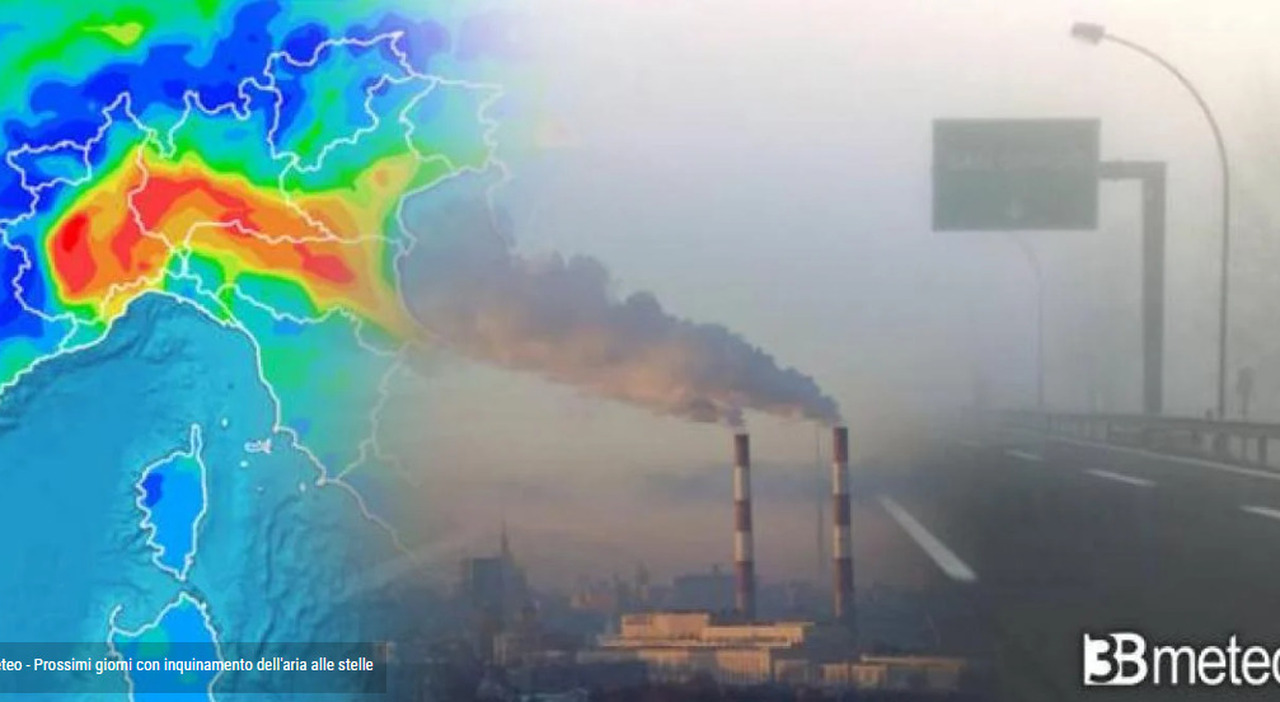Alarm over fine dust in Italy after the latest findings that have highlighted worrying data in Milan and in the Po Valley, but also in Rome. We asked for an opinion from Edoardo Ferrara, a meteorologist at 3bmeteo.com.
Over the past few days, Milan has been classified among the most polluted cities in the world, especially in terms of the concentration of fine dust. Is it really so?
«Beyond the rankings, the data on which the study conducted by the Swiss site IQAir is based are taken directly from the detection stations and are therefore absolutely objective. They tell us that between Sunday, February 18 and Monday, 19, the levels of fine dust in Milan and in the Po Valley exceeded 100-110 micrograms per cubic meter, well beyond the limit of 50 micrograms. The area is therefore very polluted».
What is the link, if any, between atmospheric conditions and air pollution?
«The link is absolutely there. Rain and wind, in fact, are able to reduce the level of fine dust in the air. In winter the issue is emphasized as cold air is heavier and therefore tends to settle, for example in the plains, to the ground. In summer, on the other hand, the hot ground creates turbulence and consequently the air is remixed. The current conditions are due to the prevailing lack of rain and wind in the last period».
The problem is serious not only in Milan, but throughout the Po Valley. Why is this area one of the most polluted?
«The area of the Po Valley is one of the most polluted in the world for two fundamental reasons. First of all, the geological conformation: the Plain, in fact, is closed by the Alps and the Apennines and only open to the Adriatic Sea. The anticyclonic conditions that have characterized much of this winter do not allow a correct recirculation of the air, which instead stagnates. The second reason lies in the fact that about 1/3 of the national population lives in the area and there is a high concentration of industrialization and urbanization, which produce very high emissions. It is normal, therefore, that the situation is this. The main sources of PM10 emissions are heating and wood combustion, which is why restrictions also concern the heating of homes and shops and not just traffic».
The concentration of PM10 in the air is also high in Rome. Is there cause for concern?
«In Rome the pollution levels are quite high and the air quality is not good, but it has nothing to do with the situation in Milan and the Po Valley. So let's say there is relative concern: it is obvious that the best thing would be not to breathe fine dust. Cities like Rieti or L'Aquila are in conditions, from this point of view, much better than Rome, which in turn is better than most of the Po Valley. The Capital is an "open" city around and the dusts manage to disperse even in situations of high pressure. In the Po Valley, on the contrary, with high pressure the concentration of PM10 remains high».
On February 25, in Rome, there will be an "ecological Sunday"...
«In addition to the traffic block scheduled for Sunday, February 25, in Rome there is an Atlantic disturbance coming from the weekend that will bring precious rains and fairly sustained winds (in Rome the Libeccio) that will guarantee cleaner air. The precipitation that will occur from the weekend, even if not abundant, can bring down the fine dust, also in the Po Valley».
Why does a high concentration of fine dust in the air represent a danger?
«There are two types of fine dust we are talking about, PM10 and PM2.5, which are even finer. These are able to filter our protection when we breathe, bypass the filter which is represented by the nose and go directly to the lungs where they deposit. The problem is not breathing them one day or two, but doing it regularly. In anticyclonic winters like this, with little rain and few winds, the dust is breathed for very long periods».
This article is automatically translated
